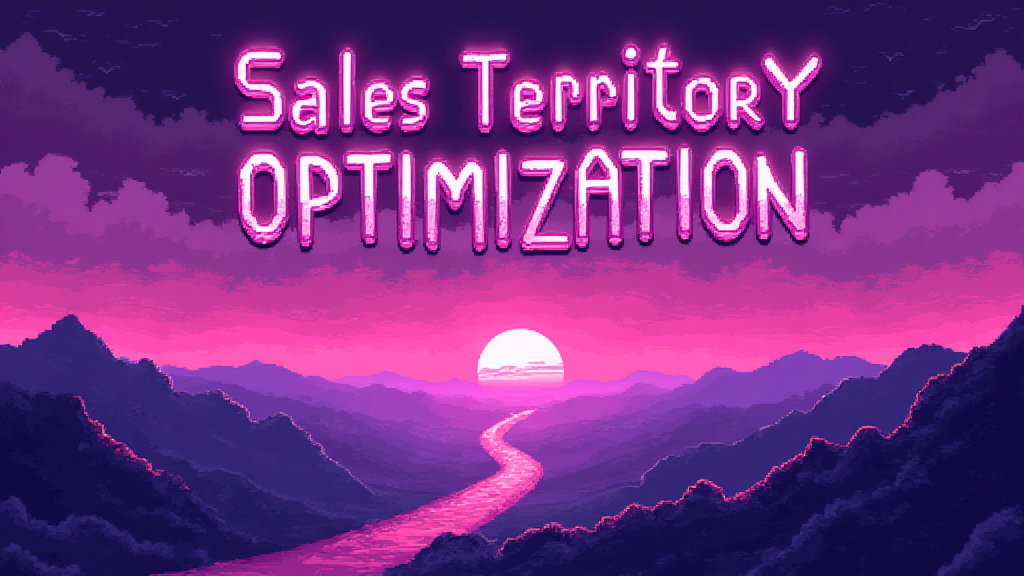Sales Territory Optimization: Maximize Revenue

Published on: October 01, 2024
Sales Territory Optimization is the strategic process of dividing and allocating sales resources across geographic areas or customer segments to maximize revenue and efficiency. This data-driven approach ensures that sales teams are deployed effectively, balancing workload and potential opportunities. For more information, visit sales territory management.
Why Sales Territory Optimization Matters 🎯
Effective territory management is crucial for sales success. Here's why it's important:
- Improves sales team productivity
- Enhances customer coverage and satisfaction
- Reduces travel costs and time
- Increases revenue potential
- Balances workload among sales reps
Key Components of Sales Territory Optimization
To optimize sales territories effectively, consider these crucial elements:
1. Data Analysis 📊
Analyze historical sales data, market potential, and customer demographics to make informed decisions.
2. Geographic Mapping 🗺️
Use mapping tools to visualize territories and identify gaps or overlaps in coverage.
3. Account Segmentation 🏢
Group accounts based on size, industry, or potential to ensure appropriate resource allocation.
4. Workload Balancing ⚖️
Distribute accounts and opportunities fairly among sales reps to maintain motivation and prevent burnout.
Benefits of Sales Territory Optimization Software
Implementing sales territory optimization software can significantly enhance your optimization efforts:
| Benefit | Description |
|---|---|
| Automated Analysis | Quickly process large datasets to identify trends and opportunities |
| Real-time Adjustments | Adapt territories on-the-fly based on changing market conditions |
| Scenario Planning | Test different territory configurations before implementation |
| Performance Tracking | Monitor and measure the impact of territory changes over time |
Best Practices for Sales Territory Optimization
- Regular Reviews: Assess and adjust territories at least annually to account for market changes.
- Collaborative Approach: Involve sales reps in the optimization process to gain valuable insights.
- Clear Communication: Ensure all team members understand the rationale behind territory assignments.
- Alignment with Company Goals: Tailor territory strategies to support overall business objectives.
- Continuous Improvement: Use performance metrics to refine and improve territory designs over time.
Challenges in Sales Territory Optimization
While the benefits are clear, organizations may face some hurdles:
- Resistance to change from sales teams
- Difficulty in accurately forecasting market potential
- Balancing fairness with maximizing revenue potential
- Integrating optimization strategies with existing CRM systems
Measuring Success
To gauge the effectiveness of your sales territory optimization efforts, track these key performance indicators (KPIs):
- Revenue per territory
- Customer acquisition cost
- Sales rep productivity
- Customer satisfaction scores
- Market penetration rates
By consistently monitoring these metrics, you can identify areas for improvement and refine your optimization strategy.
Implementation Questions to Consider
As you look to implement or improve your sales territory optimization strategy, ask yourself:
- How well do our current territories align with our business goals?
- Are we effectively utilizing data to inform our territory decisions?
- What tools or software could enhance our optimization process?
- How can we better involve our sales team in territory planning?
- What metrics should we prioritize to measure the success of our optimization efforts?
















